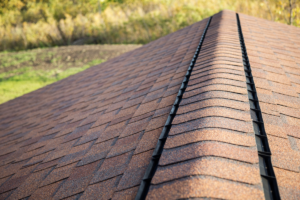_ Roofing _
How Each Part Of A Roof Works Together To Protect Your Home
Your roof plays a crucial role when it comes to your home’s protection, and a lot depends on the quality of your roofing system.
But did you know that your roof is much more than what you see from the outside? Now, you might be thinking, why do I need to know about the different parts that make up a roof? But if you want the best for your home, it is essential.
Learning about the different parts of a roof structure can help you maintain the system better, identify potential issues, and make informed decisions when you hire a roofing contractor for repairs.
Today, we will walk you through the various roof components that work together to create a durable and efficient roofing system.
Rafters
Rafters are the slanted beams that hold up the roof. These beams, similar to trusses, are responsible for creating the structure for your roof. They stretch from the top of the walls to the roof’s peak and bear the weight of the roof. Usually, they’re crafted from wood, though sometimes metal is used for extra strength and longevity.
For a sturdy roof, it’s crucial to have roof rafters that are the right size and distance apart. You need to ensure that the rafters are firmly attached to the walls and correctly lined up to keep the roof level and solid.
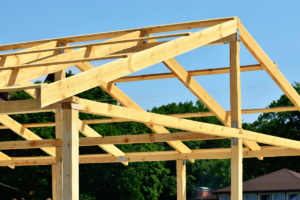
Roof Deck
Now let’s move to the innermost layer of the roofing system: the roof deck. The deck, also known as roof sheathing, is the foundation for other parts of a roof.
Roof decks can be made from several different materials. The most popular are half-inch plywood and oriented strand board (OSB). Metal can also be used, but it is not as common. Your roof deck acts as a solid, level surface on which the contractor will install other parts such as underlayment and ultimately your roofing materials. The deck not only supports the weight of the roof but also helps to distribute any additional weight evenly across the roof structure.
Proper installation of the deck is crucial for the longevity and durability of your roof. It should be securely fastened to the structural frame of the roof, rafters, or trusses, and properly aligned to ensure a level surface. Additionally, the deck can be treated with a waterproof coating to protect it from moisture damage.

Roof Underlayment
The underlayment is a waterproofing layer that is installed on top of the roof deck and below the roofing materials. It provides an additional layer of protection against water infiltration.
There are different types of underlayment materials available, including asphalt-saturated felt, and synthetic and rubberized options. The underlayment helps to prevent leaks and extends the lifespan of the other roofing materials.
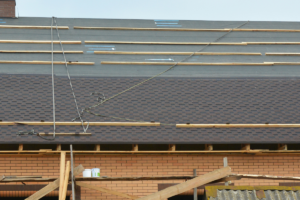
Roof Vents
Roof vents are a vital part of a roofing system. The vents allow the exchange of air in the attic. Both roof and attic ventilation help remove excess heat and moisture. This prevents the growth of mold and mildew, lowers the possibility of health issues, and extends the lifespan of the roofing materials.
There are different types of vents, including ridge vents, soffit vents, gable vents, and static vents. These are strategically placed to create a balanced airflow within the attic.
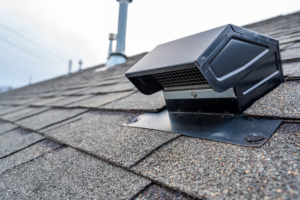
Roof Ridge
The ridge is the highest point of the roof, where the two sloping sides meet. It forms a straight line across the roof’s length, making the peak. The ridge does more than just act as the peak of your roofing system, it provides extra support and distributes the roof’s weight evenly. Usually, it’s made stronger with ridge boards and other supports.
Plus, the ridge is a vital part of the roof’s appearance. You can improve your roof’s curb appeal by adding stylish ridge caps or tiles. These not only give the roof a more finished look, but also keeps water from sneaking in along the ridge, protecting the underlying materials.
Hip
A hip is a sloping ridge that connects two adjacent roof sections. It forms a pyramid shape and provides additional support and stability to the roof structure. Hips are typically reinforced with hip boards or ridge caps to protect the roof from water infiltration and wind uplift.
Hip boards are horizontal boards that run along the edges of the hips and provide a finished look to the roof. They are often matched to the fascia and rake boards to create a cohesive and aesthetically pleasing appearance.
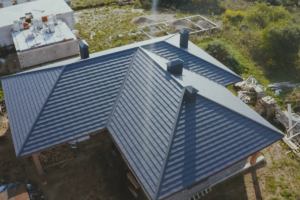
Eaves
The eaves are the lower edges of the roof that overhang the walls of a house. They provide protection from the elements, such as rain and snow, and help prevent water from seeping into the walls and foundation. The eaves also help to create shade and reduce heat gain in the summer.
Eaves can be left open or closed, depending on your aesthetic preferences, and can have soffit vents added for increased airflow. They are often reinforced with eave boards or frieze boards to provide additional support and a finished look to the roof.
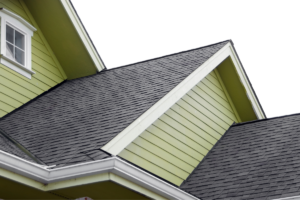
Valley
A valley is the intersection of two sloping sections on a roof, forming a V-shaped depression. Valleys are prone to water runoff and are susceptible to leaks if not properly protected. To prevent water infiltration, flashing is installed along the valley to direct water away from the roof and into the gutters or downspouts.
Valley flashing is typically made of metal, such as aluminum or copper, and is installed either underneath, or over top of the roofing materials. It is designed to withstand any weather conditions and provide a watertight seal.
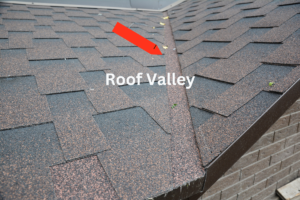
Roof Flashing
Flashing plays a crucial role in the roofing system by preventing water infiltration from occurring along vulnerable areas, such as roof penetrations and transitions. Manufacturers typically make flashing from metal or vinyl and install it around chimneys, vents, skylights, and other spots where the roof intersects with something else. Flashing is designed to create a tight seal and redirect water away from the roof, sending it into the gutters or downspouts. To ensure it effectively prevents leaks and water damage, it’s important to install and maintain flashing correctly.
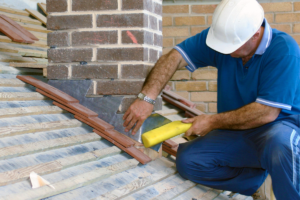
Drip Edge
A drip edge is a metal strip that is installed along the edges of the roof to direct water away from the fascia and into the gutters or downspouts. It helps to prevent water from seeping into the underlying structure and causing damage.
Drip edges are typically made of aluminum or galvanized steel and are installed underneath the roofing materials. Though this is one of the smallest roof parts, it plays an important role in maintaining your overall system.
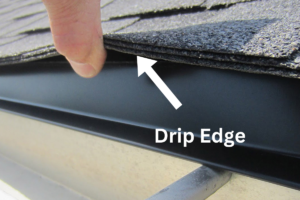
Roofing Materials
Lastly, let us move to the outermost part of the roofing system, the layer that is visible to you and your neighbors. Roofing material, also called the covering of your roof, is responsible for protecting the underlying structure against the elements, such as rain, snow, and wind.
There are different types of roofing materials available in Dayton. The most popular choice is asphalt shingles, but other options include metal, wood shakes, and tile. The material you choose will depend on various factors, such as your local climate, your budget, and the style of your home.
Since this is your home’s first line of defense, it is essential that you hire a professional roofing company with experience installing new roofs.
These parts make up the structure of the roof, but now we’ll go over some other sections that are essential to the roofing system.
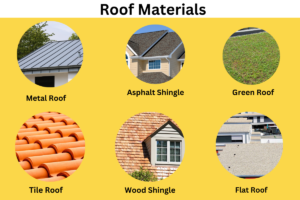
Gutters and Downspouts
Gutters and downspouts are crucial roof parts that collect and direct rainwater away from the roof and the foundation of the house. Gutters are installed along the edges of the roof to collect water, while downspouts are used to channel it from the gutters to the ground. They help to protect the foundation of the house by directing the water away from the building.
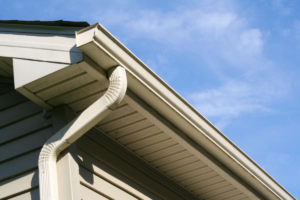
Soffits
Soffits are located on the underside of the eaves, which is the part of the roof that overhangs the walls. They provide a finished look to the roof and protect the rafters and attic from the elements. Soffits are often ventilated to allow for proper airflow and prevent the buildup of moisture in the attic.

Fascia
The fascia is the vertical board that runs along the edge of the roof and covers the exposed ends of the rafters. It provides a finished look to the roof and protects the underlying structure from water damage. The fascia also acts as a support for the gutters and downspouts, directing water away from the roof and the foundation of the house.
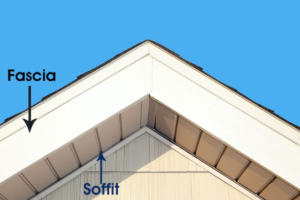
Hire Us For Your New Roof Installation
We hope that this blog post helps you become more aware of the parts of a roof. Each component plays a vital role in protecting your home from the weather and ensuring its structural integrity.
Knowing the parts of your roof will help you make informed decisions and get the best deals as you hire a contractor for roof replacement or new roof installation.
If you’re unsure about the condition of your roof or need assistance with any roofing related concerns, contact the team at AlphaOne Exteriors. We are your premier Dayton roofing contractors and offer the best residential roofing services.
Contact us today at (937) 401-3405 to learn more.


